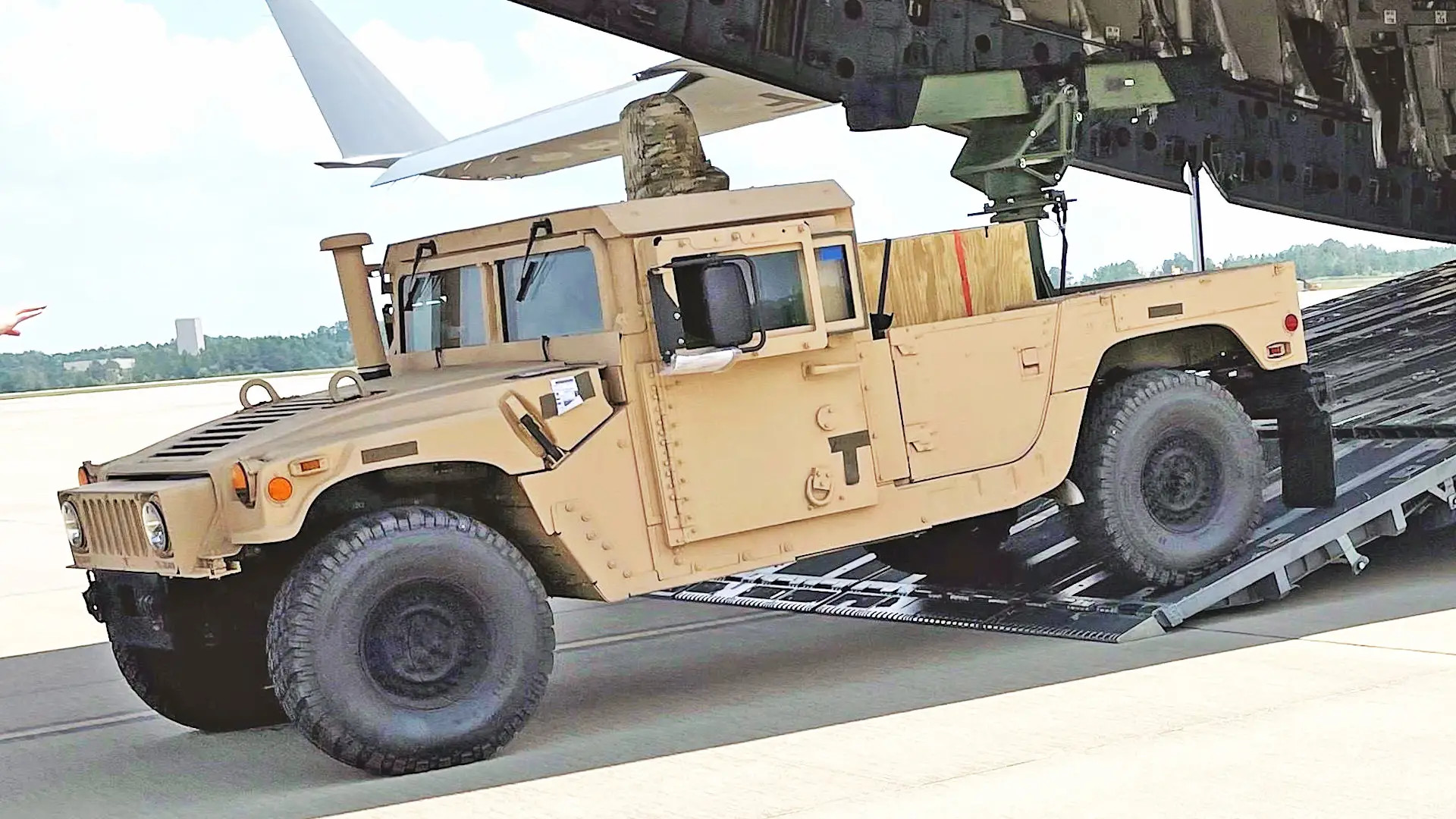We have what appears to be the first look at a U.S.-supplied VAMPIRE counter-drone system in action, doing what it was intended — shooting down one of Russia’s Iranian-designed Shahed-type kamikaze drones. This system uses laser-guided 70mm rockets, originally designed for air-to-surface use, as surface-to-air weapons.
The Ukrainian Navy released a video yesterday, seen in the social media post below, showing a VAMPIRE system in use somewhere in the country’s southwestern Odesa region.
The Ukrainian Navy did not expressly say that the footage was of a VAMPIRE system. However, the clips show the view through the operator’s console, and the symbology and other details (even those which are blurred out) are virtually identical to what has been seen in official marketing literature from manufacturer L3Harris.



The VAMPIRE promotional video below also shows more of the control interface.
VAMPIRE consists of three main components, a four-round LAND-LGR4 70mm launcher loaded with laser-guided Advanced Precision Kill Weapon System II (APKWS II) rockets on a turreted mount, a sensor turret, and a fire control system. It is designed to be readily adaptable to any suitably sized vehicle, but the examples provided to Ukraine are known be mounted on M1152A1 Humvees. Ukrainian forces have received at least 14 VAMPIRE systems and have been using them operational since last August, according to the Pentagon.

The footage otherwise shows the Shahed-type drone being tracked and lased, and then a rocket is fired at it. The rocket intercepts the drone and a detonation is clearly visible. It is hard to judge the full extent of the damage to the target, which looks to be minimal from what can be seen through the infrared video feed.
Regardless, the operators can be heard in the video congratulating themselves over a successful intercept and the last clip appears to shows the drone falling out of control into the ground.

VAMPIRE is, of course, just of one of array of anti-drone and more general short-range air defense systems Ukraine has acquired in the past two years. With only 14 of these systems known to have been delivered to Ukraine, this is a relatively low-density capability for the country. Still, the systems do offer an additional mobile defensive tool against incoming drones for a country that has a persistent need for more air and missile defenses overall. This would also be a major boost in capability if put into the hands of any of Ukraine’s many ad hoc drone hunting teams, which currently rely heavily on improvised systems.
Even in relatively small numbers, VAMPIREs could help ease the need to use higher-end air defense systems for counter-drone duties. Shahed-type drones, as well as cruise missiles, remain the primary means Russian forces use to strike target deep inside Ukraine. Just in the past three days, Russia launched 93 Shaheds at targets across Ukraine, of which 77 were shot down, according to Ukraine’s Air Force. The War Zone cannot immediately verify those figures independently, but it still gives a sense of the scale of the threat and the resources required to mitigate it.

VAMPIRE’s use of APKWS II rockets as its effector also presents distinct benefits in terms of cost and sources of additional ammunition. Modularity is central to APKWS II, with the laser guidance section being designed to slot in between standard 70mm warheads and Mk 66 rocket motors without any modifications. The total cost of a single APKWS II rocket has been pegged at around $27,500 in the past, most of which is the cost the guidance and control section.
For comparison, a single new AIM-120 Advanced Medium Range Air-to-Air Missile (AMRAAM), like the ones Ukraine fires from its Western-supplied National Advanced Surface-to-Air Missile Systems (NASAMS), costs around $942,000. Even the unit price of a single Stinger short-range surface-to-air missile has exploded in recent years, according to U.S. Army budget documents.
On top of the price point, there are a vast number of potential sources for Ukraine to source unguided 70mm rockets – which the country is already receiving for air-to-surface use – that could then be mated with APKWS II kits to turn them into relatively cheap anti-drone interceptors.

VAMPIRE also has the inherent ability to engage targets on the ground, giving it additional flexibility. Ukrainian forces were already observed using similar Humvee-based 70mm rocket launchers, also reportedly loaded with laser-guided APKWS II rockets, in surface-to-surface attacks last year.
Proving itself in combat in Ukraine could spur more interest in VAMPIRE, or other APKWS II-based counter-drone systems, in general. The U.S. Army, for instance, has been testing a containerized counter-drone system that is very similar in form and function to VAMPIRE.
The conflict in Ukraine, overall, has put a new spotlight on the importance of short-range air defense on modern battlefields and fully driven home the threat that drones of various tiers pose on and off the battlefield. We have now gotten our first look at a VAMPIRE system being used operationally as part of the anti-drone capabilities the country has and continues to field in its defense.
Contact the author: joe@twz.com
